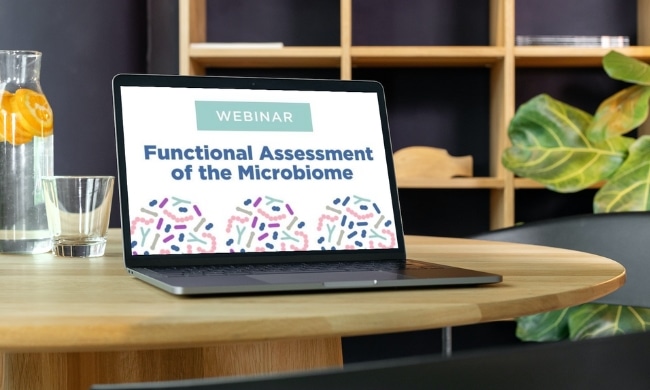If you are interested in learning more about how to access the gut microbiome via exhaled breath within research, our scientific webinar explores the use of non-invasive breath biomarkers originating from the gut microbiome.
You can view the slides presented here
Highlights from the Question & Answer session
You mentioned using exhaled breath to measure metabolites from the gut microbiome and differentiating between small and large intestine. How do you differentiate your read outs from those coming from the oral cavity or the lung microbiome?
Owlstone’s collection system collects the lower breath fraction, excluding the dead space which includes the oral cavity. Our samples are thus enriched for volatile organic compounds (VOC)s coming from the blood and lung.
What are the pros and cons compared to faecal sample analysis?
- Fecal analysis reflects bacterial metabolism from a few hours-days ago, while breath gives an almost instant read out, similar to blood, as gut metabolic products will diffuse quickly into the blood then out into the breath
- Fecal samples are often challenging to get from patients – they are off-putting and can harm recruitment rates
- Fecal samples can only be obtained as and when the patient produces them – longitudinal time courses to monitor what’s happening over the course of minutes to hours is not possible. Breath samples can be collected at frequent intervals
How amenable is your breath collection method to high frequency serial sampling in the same individuals?
Extremely amenable. There are no limits on the frequency of breath sampling. This is well demonstrated by hydrogen and methane testing, where a substrate that microbes metabolize is ingested, then samples are taken over a three hoursperiod to determine where in the gut approximately the metabolising microbes are.
How long is each breath sample collection session?
One of the benefits of breath VOCs is that they can be concentrated – thus, taking a longer breath sample allows us to analyse even molecules that are very low concentration in the breath. For biomarker discovery, where we want to be able to analyse as broad a range of molecules as possible (both those at high and low concentrations in the breath), we typically collect a breath sample over 13-15 minutes – this gives us 5 L of breath in total, spread across two samples.
Do you have any studies/examples comparing short chain fatty acids (SCFAs) measured by breath vs. SCFA measured by a stool sample? Our typical method of assessing SCFAs is by stool sample. Would like to see how this compares with a breath analysis.
Looking at the samples of both matrices from the same patient has not yet been done, however, due to the temporal differences the samples would not be expected to be identical – breath is more similar to blood in that it reflects metabolism at the time of collection, while fecal samples reflect metabolism a few hours-days after.
Are the VOCs completely coming from metabolism of metabolites that pass through the blood, liver, and into the lungs or are they directly regurgitated from the GI tract? If the VOCs are generated in the first mechanism, then changes in microbiome in other areas of the body, e.g. joints, skin can generate these VOCs either by themselves or in combination with microbiome in the gut.
What we see in the breath will be coming more from the blood and lungs, versus direct regurgitation from the digestive tract. You are correct that changes not just to the microbiome will be observed in breath – we will see VOCs from anywhere around the body in contact with the blood.
Is Hydrogen Sulphide detected in all people or are there individuals whose microbiome do not generate Hydrogen Sulphide?
Hydrogen Sulphide was detected in all patients [sampled by the Functional Gut Clinic], however, the levels of it varied significantly.
With regard to ethanol fermentation by the gut, couldn’t high fermenters modify their diet to correct the issue?
Diet is one approach to reducing the symptoms, but it doesn’t solve the problem. Similarly, treatment with probiotics containing ethanol-consuming bacteria could be another route to remedy the issue. (Indeed, there is a clinical trial underway that is assessing the utility of ethanol-consuming probiotic bacteria for reducing fatty liver.) However, it is likely that antibiotic treatment would be warranted to reduce/eliminate the pathogenic ethanol-producing bacteria in the gut and restore proper balance.
If you are interested in learning more about our research, please contact us to learn more via the button below.
